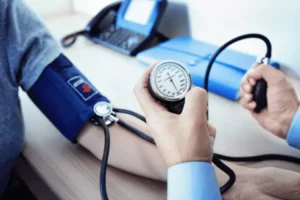
An individual’s dependence on alcohol may also become more apparent to those around them. Boca Recovery Center is here to provide the best quality care in the treatment of drug and alcohol addiction. Connect with other people who struggle with alcoholism and find out how they cope. Warning signs of the condition include denial, blackouts, neglecting responsibilities, and withdrawal symptoms when alcohol intake is stopped or reduced.
Alcohol Disorder Self-Assessment Tool
- The stages range from moderate consumption and occasional binge drinking to severe AUD.
- While occasional use is generally considered normal, the development of tolerance and an increase in the frequency of binge drinking are warning signs.
- The primary symptoms of stage four include all-consuming alcohol use, health problems, and dangerous withdrawal symptoms.
- Some people — known as functioning alcoholics — can still maintain their life during this phase, but this is rare and likely to lead to liver damage or other alcohol-related illnesses.
We cannot guarantee payment or verification eligibility as conveyed by your health insurance provider will be accurate and complete. Payment of benefits are subject to all terms, conditions, limitations, and exclusions of the member’s contract at time of service. Addiction Resource does not offer medical diagnosis, treatment, or advice. Only trained and licensed medical professionals can provide such services. If you or anyone you know is undergoing a severe health crisis, call a doctor or 911 immediately. The stages range from moderate consumption and occasional binge drinking to severe AUD.
Stages of Alcoholism: Early, Chronic, and End Stage
Go to an Al-Anon or Alateen meeting or set up an appointment with a mental health professional. At the end of the day, the person with addiction has to be willing to accept help. There are factors that pop up again and again when determining who might have an issue with alcoholism. If you’re in the “at-risk” population, it doesn’t take much to become dependent on alcohol or other drugs. Identifying problems with alcohol early can help prevent dependence and addiction.

What Happens During The Recovery Stage?

Attempts to stop drinking can result in tremors or hallucinations, but therapy, detox, and rehab can help you get your life back. Compulsive behaviors are prominent in addiction, and people with alcohol addiction often drink whenever and wherever they desire. Drinking large amounts of alcohol at one time is dangerous, and can even lead to coma or death. Furthermore, you may become dependent on the feeling you get from drinking and find that these episodes increase in frequency. Knowing the signs and symptoms of each stage can aid you in seeking help before your problem turns into dependence and addiction. As the disease becomes more severe, blackouts and loss of control can happen.
- While each person is unique, there are some typical stages that many struggling with drinking go through.
- Additionally, this stage of alcoholism is when an individual will begin to identify a sense of emotional relief as an effect of alcohol.
- Alcoholics in this stage have a hard time controlling their drinking.
It’s common at this point for alcoholics to have lost their jobs as well their friends and family. Alcoholics in this stage have a hard time controlling their drinking. They may begin drinking early in the day and plan their day around their drinking. In social situations, they may be unable to stop drinking when others do and find that they can’t handle as much as they previously could without becoming drunk. Blackout episodes, where the individual does not remember what they’ve said or done while drinking, may occur. The primary symptom of stage one is the development of alcohol tolerance.
- However, most people with AUD—no matter their age or the severity of their alcohol problems—can benefit from treatment with behavioral health therapies, medications, or both.
- Addiction Resource is an educational platform for sharing and disseminating information about addiction and substance abuse recovery centers.
- The National Institute on Alcohol Abuse and Alcoholism (NIAAA) provides diagnostic criteria for AUD based on the DSM-5.
- Between 3 and 5 percent of people withdrawing from alcohol develop grand mal seizures and severe confusion, known as delirium tremens.
- His four theoretical stages of alcohol addiction provide a structured understanding of the deepening severity of the disease.
How to Avoid the Development of Alcoholism
Understanding these early indicators is crucial for timely intervention and prevention of progression to chronic alcoholism. Baseline characteristics, including age, sex, race, census region, coverage type, nursing home use, and comorbidities, were assessed in the 12 months prior to index date. In the follow-up period, outcome measures of disease progression and mortality were assessed. Disease progression was identified based on claims with a diagnosis/procedure code for more advanced liver disease states.

You can ask for help at any point, whenever you realize your drinking has gone too far. Treatment is most beneficial for those at the point of middle-stage alcoholism. They haven’t reached a place where their health five stages of drinking declined too far and they can make some extreme changes in their lives. Attending alcohol rehab at this stage will be incredibly beneficial. The pre-alcoholic stage occurs before alcohol is ever a real problem.

